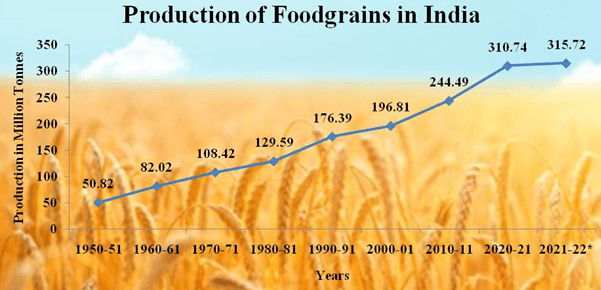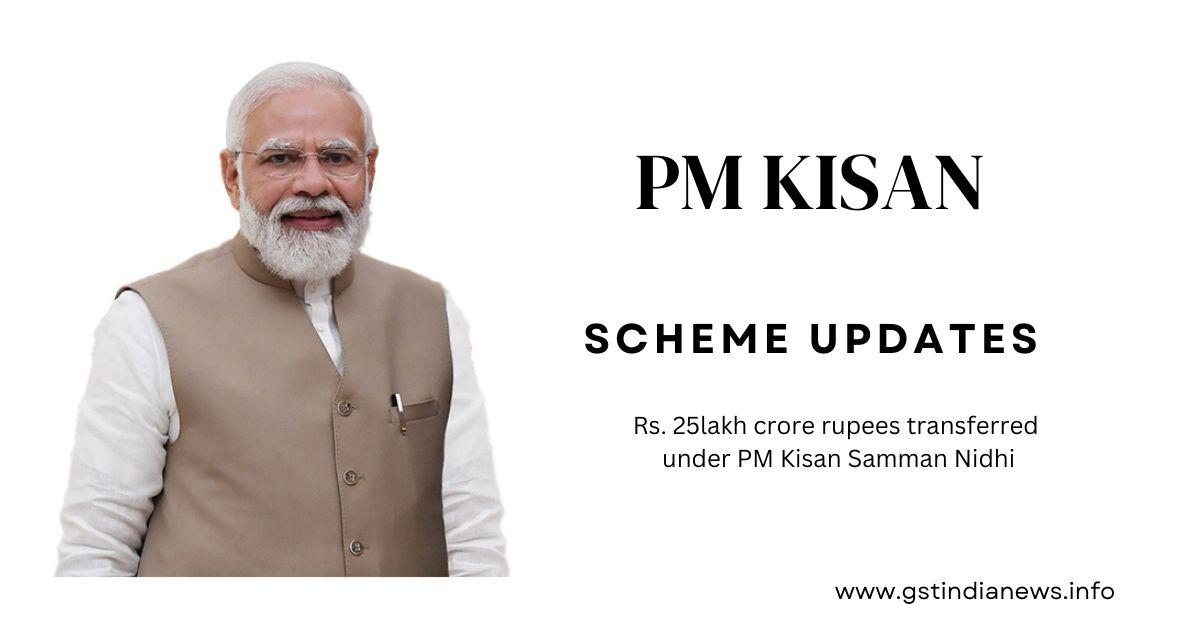Prime Minister Acknowledges the PM Kisan Benefits provided to Indian farmers recently. This has been acknowledged during the foundation stone and is dedicated to the nation’s multiple projects worth over Rs 9500 crores in Ramagundam, Telangana. The PM said 2.25lakh crore rupees were transferred under PM Kisan Samman Nidhi.
Further, the Prime Minister informed, that “In the last 8 years”,“ the central government has already spent approximately Rs 10 lakh crore to avoid fertilizer burden on farmers.
He further said that the central government has spent Rs 2.5 lakh crore so far this year to provide cheap fertilizers to farmers in India. Similarly, the Prime Minister informed that the central government has transferred approximately Rs 2.25 lakh crore to the bank accounts of farmers under PM Kisan Samman Nidhi.
Read: know how to check PM Kisan’s status?
On the other hand, the Prime Minister also highlighted the many brand fertilizers available in the market which have been a concern for farmers for decades. Thus, “Urea will now have only one brand in India and it will be called Bharat Brand. It’s quality and price are already fixed”, he remarked. This is a clear example of how the government is reforming the sector, especially for small farmers.
Overview of self-dependent in Agriculture
Perhaps the darkest stain of colonialism in India came in its last days when the British government’s unjust policies in the wake of World War II caused a major famine in Bengal in the early 1940s.
The draught, in retrospect, also increases India’s stark dependence on food. Soon after independence, India had to import large quantities of food grains from the USA and other developed economies, and successive wars in 1948, 1962, and 1965 led to severe food shortages. Thus, former Prime Minister Shri Lal Bahadur Shastri gave the famous slogan – “Jai Jawan, Jai Kisan”.

India’s agriculture exports
Fast forward to 2022: India’s agricultural exports hit a historic high of USD 50 billion (FY 2021-22). All-time high exports were achieved for staples such as rice, wheat, sugar, other cereals, and meat.
According to provisional data released by the Directorate General of Commercial Intelligence and Statistics (DGCI&S), agricultural exports are expected to grow by 19.92% to $50.21 billion in 2021-22. This remarkable achievement has been made possible by several important initiatives taken by the Central Government to increase food grain production in recent years.
However, the story of India’s self-sufficiency in food begins about five decades ago. In 1950-51, India faced foodgrain shortages due to intermittent droughts and droughts, forcing it to import foodgrains. A rapidly growing population is putting increasing pressure on agriculture, unable to keep up with food production and productivity.
Even at this stage, agriculture accounted for 50% of GDP; It shows how dependent our economy is on agriculture.
Green Revolution for Food supply
The Green Revolution that began in the 1960s enabled the country to make major strides in domestic food production and contributed significantly to progress in agriculture and allied sectors.
The main focus of this movement was (a) the mechanization of agriculture using cattle with modern tractors and other machinery to increase productivity, (b) the use of hybrid varieties for better production, and (c) the use of new seeds. After independence dams were built for better irrigation. It transformed India from a food-deficit country to a food-surplus country.
Further, India has achieved self-sufficiency in food grain production over the past several decades and this has been a major achievement for its agriculture sector as well as for the overall economy. Today, India is the world’s largest sugar producer and second only to China in rice production.
Thus, India is the second largest producer of wheat, accounting for about 14.14 percent of the world’s total production in 2020. India is also moving towards self-sufficiency in the production of pulses. According to the 4th advance estimate, foodgrain production in the country is estimated at 315.72 million tonnes which is 4.98 million tonnes more than the foodgrain production in 2020-21.
Impact of covid 19
It is worth noting that our farmers have grown record food grains during the deadliest pandemic of the century when the entire world was reeling under the impact of covid-19. For the convenience of farmers during the lockdown, more than 2,067 agricultural markets were operationalized.
Similarly, the Kisan Rath application was launched in April 2020 to facilitate farmers and traders to transport agricultural/horticulture produce. To boost farmers’ confidence, the Government of India is announcing the minimum support price for Kharif and Rabi crops before the sowing season, which will ensure remunerative prices.
Agriculture is the major pulse of the Indian economy and is at the core of the socio-economic development of the country. It accounts for about 19 percent of the GDP and about two-thirds of the population is dependent on this sector.
The growth of other sectors and the overall economy largely depends on the performance of agriculture through its backward and forward linkages. It is not only a means of livelihood and food security for the large population of India but also of special importance for the low-income, poor and vulnerable sections.
National Sample Survey Figures

According to the National Sample Survey, the estimated average monthly income per agricultural household is Rs. has increased from above. 6426 in 2012-13 to Rs. 10,218 in 2018-19.
The government has taken initiatives in several focus areas to increase the income of farmers. Farmers are provided income support through PM Kisan Yojana, crop insurance is assured through Pradhan Mantri Fasal Bima Yojana and irrigation facilities are ensured under Pradhan Mantri Krishi Sinchai Yojana.
Access to institutional credit is being provided through Kisan Credit Cards and other means. Under the e-NAM initiative, markets across the country are now open to farmers, enabling them to get more remunerative prices for their produce.
Chhatri Yojana Pradhan Mantri Annadata I Sanraksha Abhiyan (PM-AASHA) ensures Minimum Support Price (MSP) to farmers for Kharif and Rabi crops and also puts in place a robust procurement mechanism. The government has announced to convert over 3.25 lakh fertilizer shops across the country into Pradhan Mantri Kisan Samriddhi Kendras.
These will be centers where farmers can not only buy fertilizers and seeds but also carry out soil testing and get useful information about farming techniques. Further, the introduction of One Nation, One Fertilizer under the brand name ‘Bharat’ across the country will increase the availability of fertilizers and reduce the cost of fertilizers.
Adoption of Scientific warehousing
Initiatives such as the National Mission for Sustainable Agriculture, the promotion of scientific warehousing, and the adoption of drone technology have been undertaken to future-proof Indian agriculture.
The government has taken several steps to increase investment in the agricultural sector, such as setting up an agro-technology infrastructure fund, promoting organic farming through conventional agriculture development schemes, and creating long-term irrigation funds and micro-irrigation funds.
Under the Agricultural Infrastructure Fund, organizations such as farmers, start-ups, government agencies, and local bodies benefit from building eligible infrastructure projects. Under the Rashtriya Krishi Vikas Yojana (RKVY) scheme, grants are provided to the state governments on the basis of projects approved by the State Level Sanction Committee (SLSC) meeting.
At the center of the country’s journey to self-reliance (self-reliance) is the agricultural sector, with farmers at the heart of it. Central Government is taking important steps for the upliftment, empowerment, and stability of farmers in a comprehensive manner. The time is not far when the face of the agriculture sector will change due to continuous initiatives and investments of the government.

